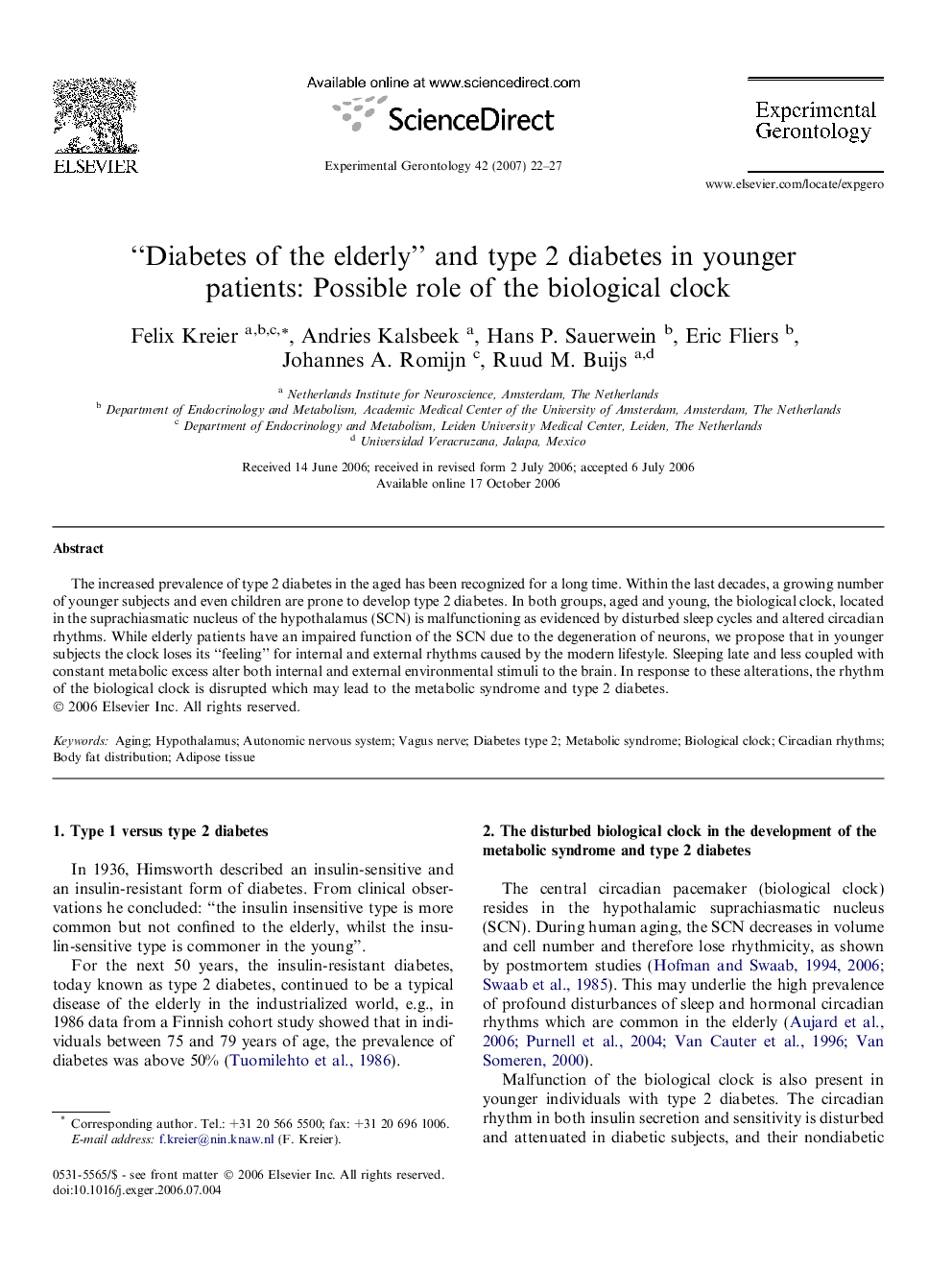| Article ID | Journal | Published Year | Pages | File Type |
|---|---|---|---|---|
| 1907254 | Experimental Gerontology | 2007 | 6 Pages |
The increased prevalence of type 2 diabetes in the aged has been recognized for a long time. Within the last decades, a growing number of younger subjects and even children are prone to develop type 2 diabetes. In both groups, aged and young, the biological clock, located in the suprachiasmatic nucleus of the hypothalamus (SCN) is malfunctioning as evidenced by disturbed sleep cycles and altered circadian rhythms. While elderly patients have an impaired function of the SCN due to the degeneration of neurons, we propose that in younger subjects the clock loses its “feeling” for internal and external rhythms caused by the modern lifestyle. Sleeping late and less coupled with constant metabolic excess alter both internal and external environmental stimuli to the brain. In response to these alterations, the rhythm of the biological clock is disrupted which may lead to the metabolic syndrome and type 2 diabetes.
